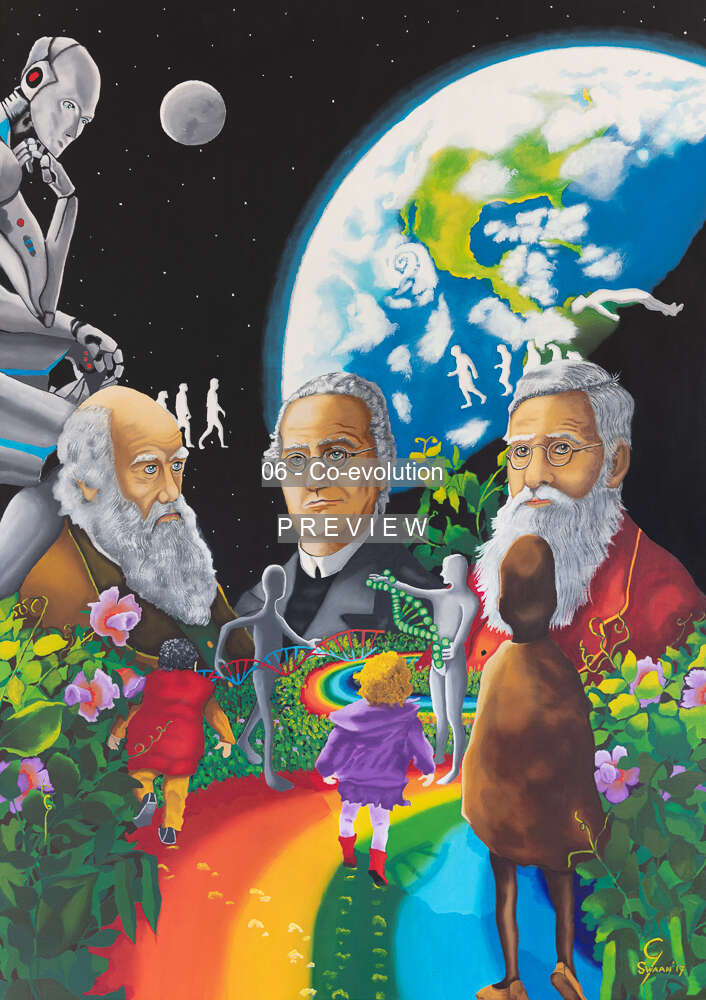Description
This is an oil painting made in 2017 on linen with an aluminum stretcher and housed in a black baking list. The size of the painting is 140 x 100 cm and finished with a matt varnish.
Co-evolution is the process of evolution in which species continuously adapt to each other. Artificial (technical) intelligence is increasingly becoming part of our daily life, and robots will give our development a boost, requiring co-evolution between humans and machines. Co-evolution will also lead to a partnership where man and machine can no longer do without each other.
When we think of the evolution of animals and humans, we first think of the theory of evolution of species under the influence of natural selection, with the founders and here also spectators of the British researchers Charles Robert Darwin on the left and Alfred Russel Wallace on the right. It should be noted that Wallace stated that the evolution of man differs from the evolution that applies to animals; for example, where does the human soul go? This was something Darwin saw no need for.
Next, we think of the evolution of characteristics as a process by which a certain aspect of an organism evolves. Genetics or heredity is the biological science that describes and explains these changes, and the basic rules of genetics were discovered in the nineteenth century by the Austrian Augustinian Gregor Johann Mendel, who is the spectator in the middle. Mendel is considered the father of genetics, beginning his famous experiments with pea plants. The plants on the painting.
The molecular structure of genes was unraveled in the middle of the twentieth century, and DNA plays a central role in all living cells. The DNA theater piece painted here also has the interest of future generations and “the autonomously thinking robot” as the end product of the co-evolution process between man and machine. Among other things, the rainbow stands for humans in all their colors and diversity. However, before we have accommodated these components in the kind of “independently thinking robot,” there is still a long way to go.
Gerrit Swaan


















